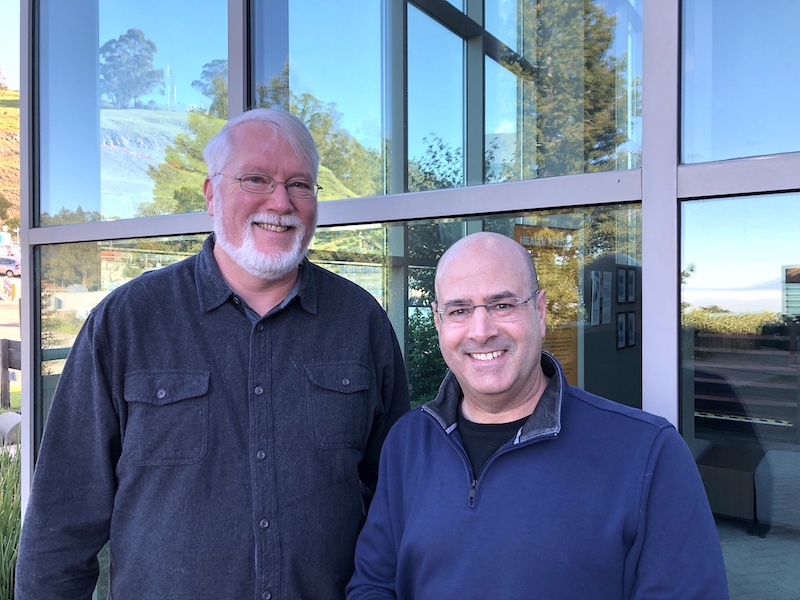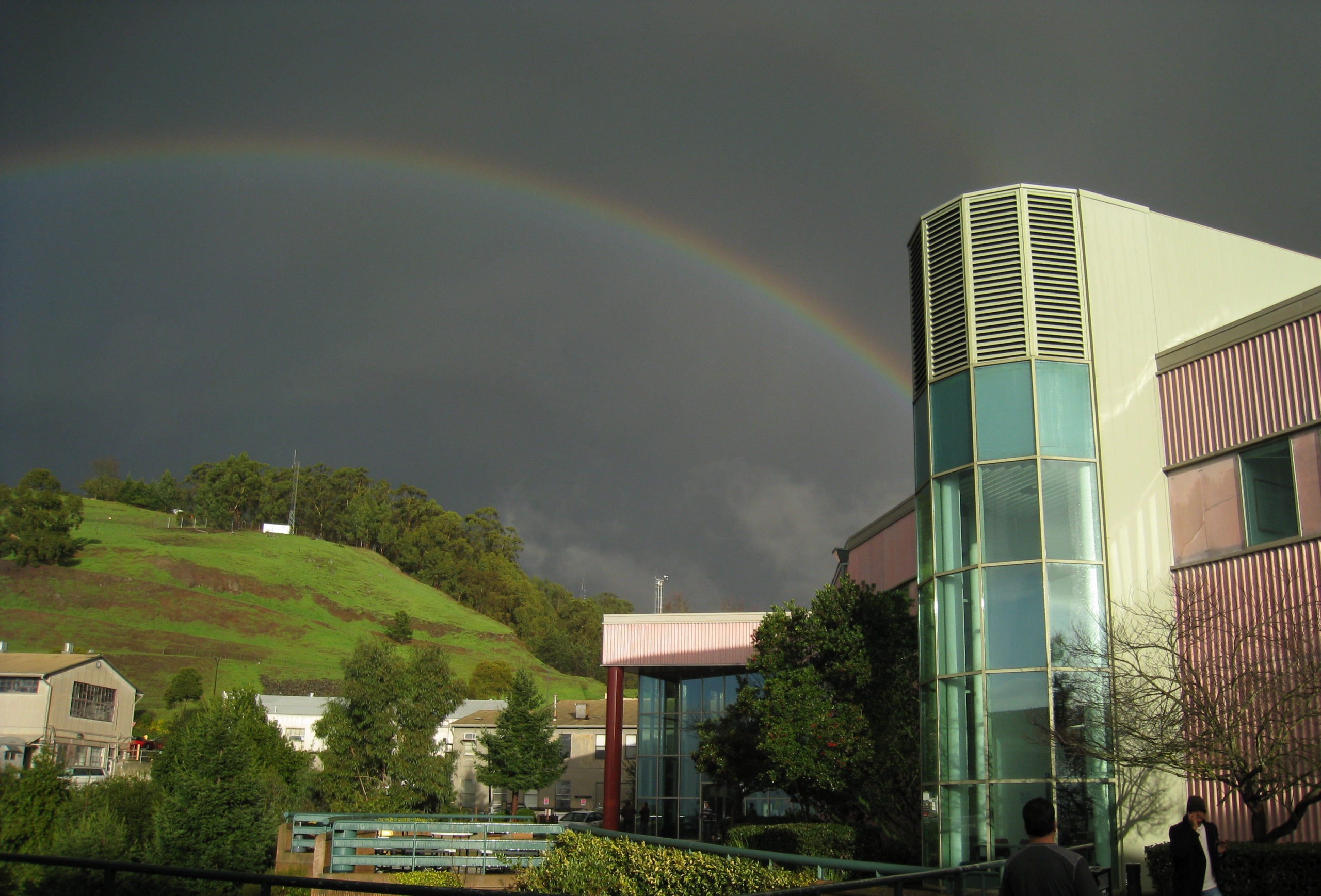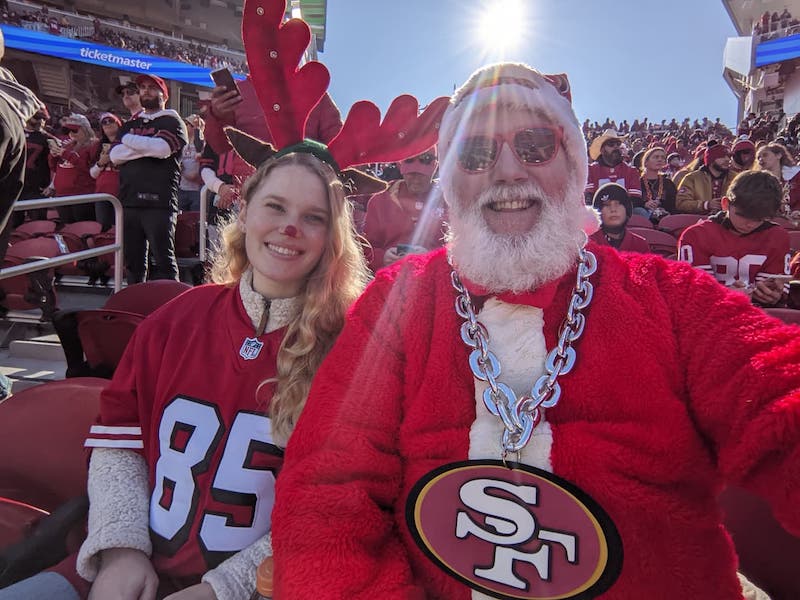
Mike Martin, Photon Science Operations lead, and Ken Goldberg, Photon Science Development lead, have more in common than growing up in the Bay Area and loving physics. Together, their groups enable the current and future science of the ALS.
Can you tell us about the Photon Science structure?
Martin: Before 2018, the ALS had two primary photon science groups, the Scientific Support Group and the Experimental Systems Group, which had a lot of overlapping functions. As our predecessors were getting ready to retire, we thought about separating them out. Now, Photon Science Operations (PSO) is all about operating beamlines and serving users. We work hand-in-hand with Photon Science Development (PSD) to come up with clever new ways to do instrumentation or new types of science.
Goldberg: In PSD, everything that touches the beam is our business. We’re interested in creating state-of-the-art tools. Around the ALS, there’s a legacy of tremendous innovation of instrumentation that grew up organically. We’re hoping to harness that creativity and bring some harmony to how things are done.
Martin: We’re working on projects to keep the science going on beamlines impacted by ALS-U and ALS-U beamline endstations.
Goldberg: Our group is figuring out the how to prioritize the next phase of work. The ALS-U Project’s beamlines stop at the exit slit, so the responsibility for creating endstations is on us, and we want to get it right.
What led you to where you are today?
Goldberg: I grew up nearby in foggy San Francisco, and I always had a deep interest in light. I got my first camera at age four, and in high school, I spent a tremendous amount of time staying up all night doing dark room work with an old 1960s enlarger that my dad brought back from his time in Germany. It’s a way of bringing science to art.
Fast forward to physics grad school, and I was looking for a project in condensed matter. My thesis advisor, Jeff Bokor, pointed me up the hill to a new project at the Advanced Light Source, which hadn’t even turned on yet. And so, I got to work on one of the first experiments at the ALS, on Beamline 9.0.1, on extreme ultraviolet (EUV) lithography and optics testing. At the time, that was viewed as a very exotic way of making computer chips. Now, it’s in every iPhone. And, what better place to study coherent EUV light than a synchrotron like the ALS?
I was in the Center for X-Ray Optics from 1993 until 2015, and I was a beamline scientist, so I have a lot of experience and empathy for what it takes to run a beamline and serve users. Then, I jumped onto ALS-U, eventually leading the beamlines and optical systems. Now I’m PSD lead.
Martin: I grew up mostly in Palo Alto, where my dad worked for Xerox Palo Alto Research Center as a theoretical physicist. Seeing the technology being developed at PARC was really amazing as a kid, and just having a built-in physics mentor helped when I got to the end of high school. I took physics and thought, “This is a lot of fun!” My dad tried to not steer me too hard but was there for questions.
During my postdoc, I found out that a former colleague had a one-year job here to help start an infrared (IR) beamline. I visited a month before she left and ended up extending my postdoc, helping Wayne McKinney with the first IR beamline in 1997. That turned into a job; I was the IR beamline lead for 20-something years and developed a desire to do more around the ALS and the Lab.
I was SSG deputy for a number of years and got into understanding operations, like safety and personnel. So, even though I’m not necessarily a soft x-ray jock at all, I feel like I can help steer and mentor the Photon Science group.
What inclusion, diversity, equity, and accountability (IDEA) activities are you involved in?
Martin: My first real foray into it was developing a safety culture. I pitched a safety culture improvement team up through the Lab management. We did a lot through the EH&S division and Lab directorate, different aspects of “looking out for each other,” and that kind of smoothly came into discussions about inclusivity, equity, and being able to make the most of the diversity we have around us. I saw that the way to reach our ultimate goal of a more equitable, diverse, inclusive environment was to be sure that when we first did those hiring committees, we weren’t just asking for friends to send their friends. We wanted to really make sure we were doing inclusive outreach. The last bunch of hires has been way more diverse than the past. I’m proud of that.
Goldberg: The principles of IDEA have been baked into the ethos of this place the whole time I’ve been working here, and I’m proud to carry that forward. This division is one big team, and I want the people on the team to feel supported and to succeed. You can have the greatest creativity and productivity from the group when people feel seen and supported, and IDEA is a central part of that. I serve on the ALS’s onboarding task force and the recognition task force. There’s a great opportunity to continually reinvent the best practices in this area, and I appreciate being part of that conversation.
What are your hobbies?

Goldberg: I always carry a camera around, and I put my photographs in my talks.
I started playing ukulele about eight years ago when my kids started music lessons. I play every day, and it’s basically impossible not to be happy when you’re playing ukulele. During the pandemic, I started taking guitar lessons on Zoom. I contributed some guitar and a ukulele solo to two songs with the ALS-U Band.
Martin: I love to travel. It’s phenomenal that I get to travel as a scientist, and I always try to tack on seeing something new. I’m a huge 49ers fan—I have season tickets, and I often travel to playoff games.
Goldberg: I’m also a fan, but I don’t have any face paint!

Martin: Ha ha, that’s right. For a number of years, my 20-foot picture was on Levi’s Stadium.
Mike, are you willing to divulge your alter ego?
Martin: I live on Christmas Tree Lane in Alameda so for over 15 years I take a turn or two every year being Santa for kids who visit our Lane. I did one-on-one Zooms with friends’ and relatives’ kids. This last year, we came back to real-life Santa on my Christmas Tree Lane. It is just delightful to see the variety of reactions kids have to seeing Santa in person.
Goldberg: I have no such alter ego that I’m willing to divulge!
Martin: One of the commonalities Ken and I share is we’re both fathers to twins. My twins are 23 now. Ken, how old are yours?
Goldberg: My sons are 11.
Martin: I joke that any good scientist needs to repeat their experiment.
Goldberg: We joked about calling them Experiment and Control! But, they’re very different people. Parenting twins is a great opportunity to learn how to resolve disputes. Mike, what advice do you wish someone had given you when your daughters were 11?
Martin: Like you say, they’re very different kids, but there’s a lot of similarities as well. When they have common types of problems, I would lean back to see whose problem I could come up with a helpful thing for. If I could help one of them, it would actually help the other a little bit, too—even if it’s just finding which one will laugh at my dumb joke to break the tension.
Goldberg: They definitely learn from what the other one is going through.